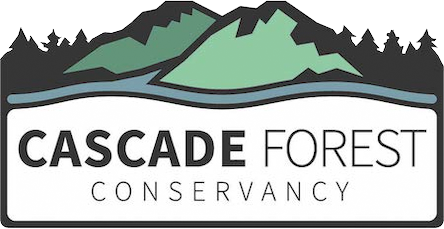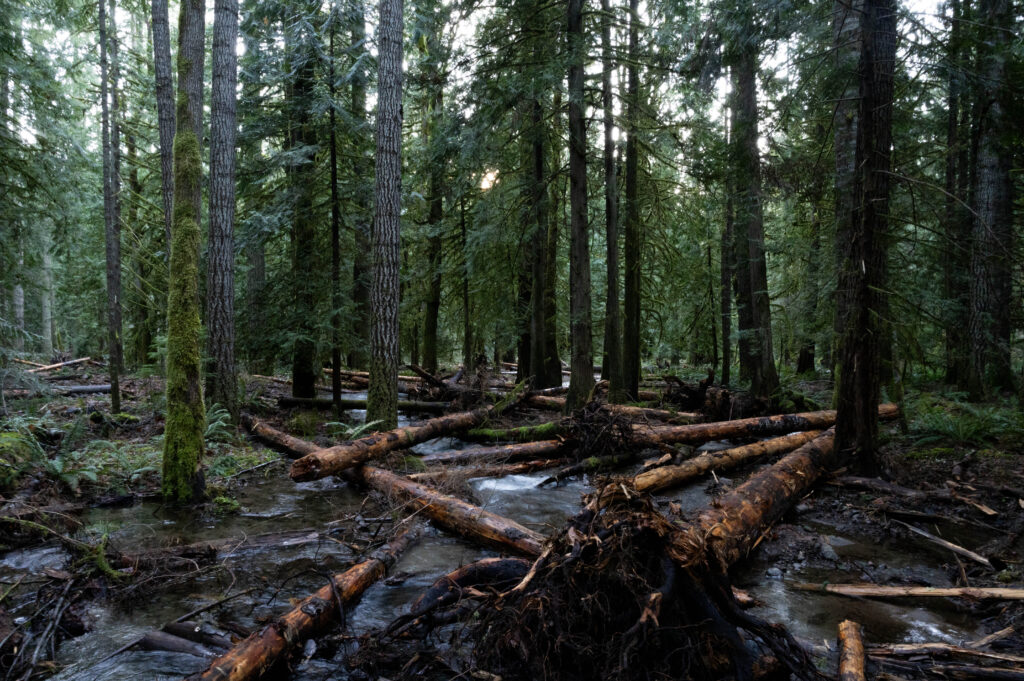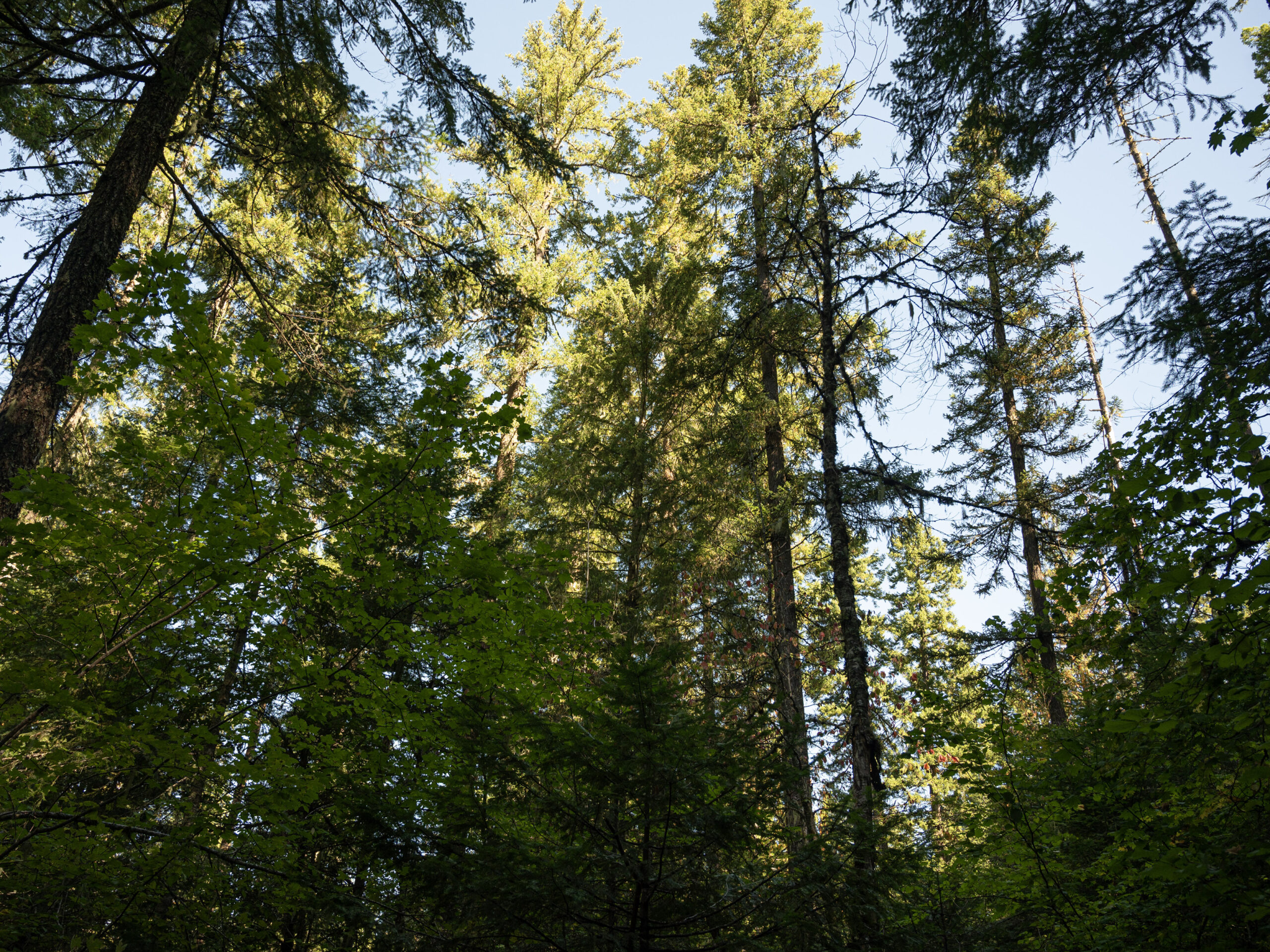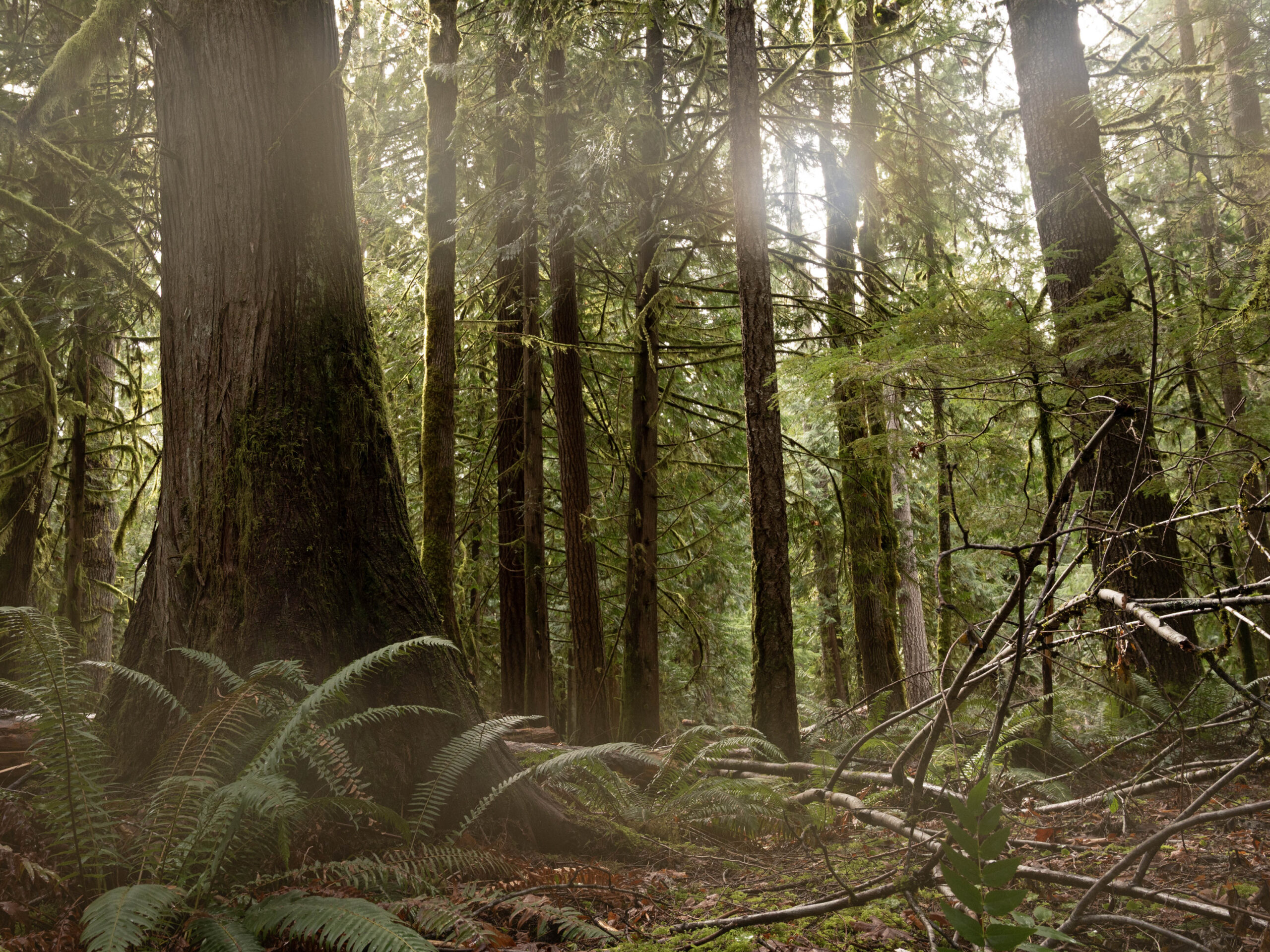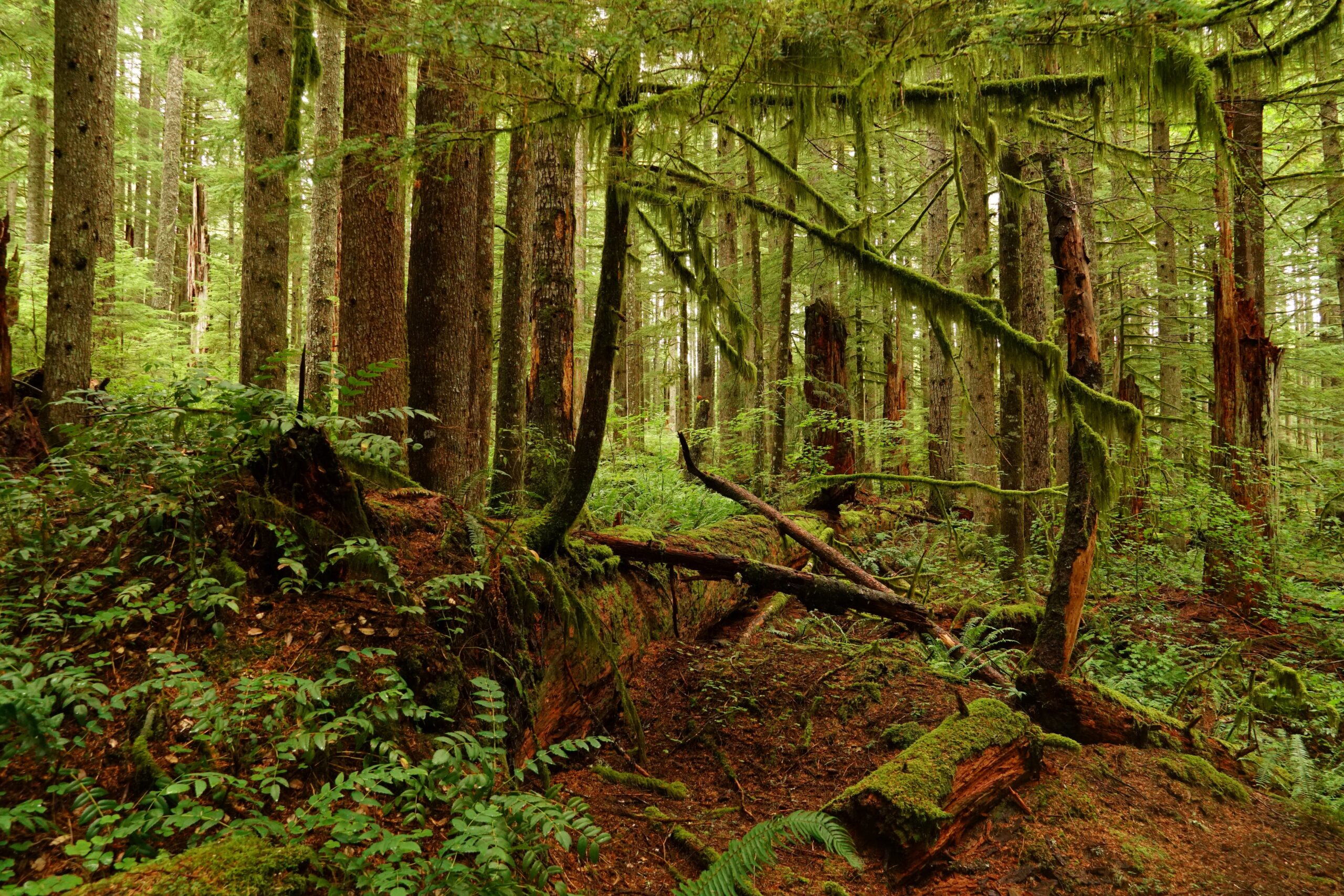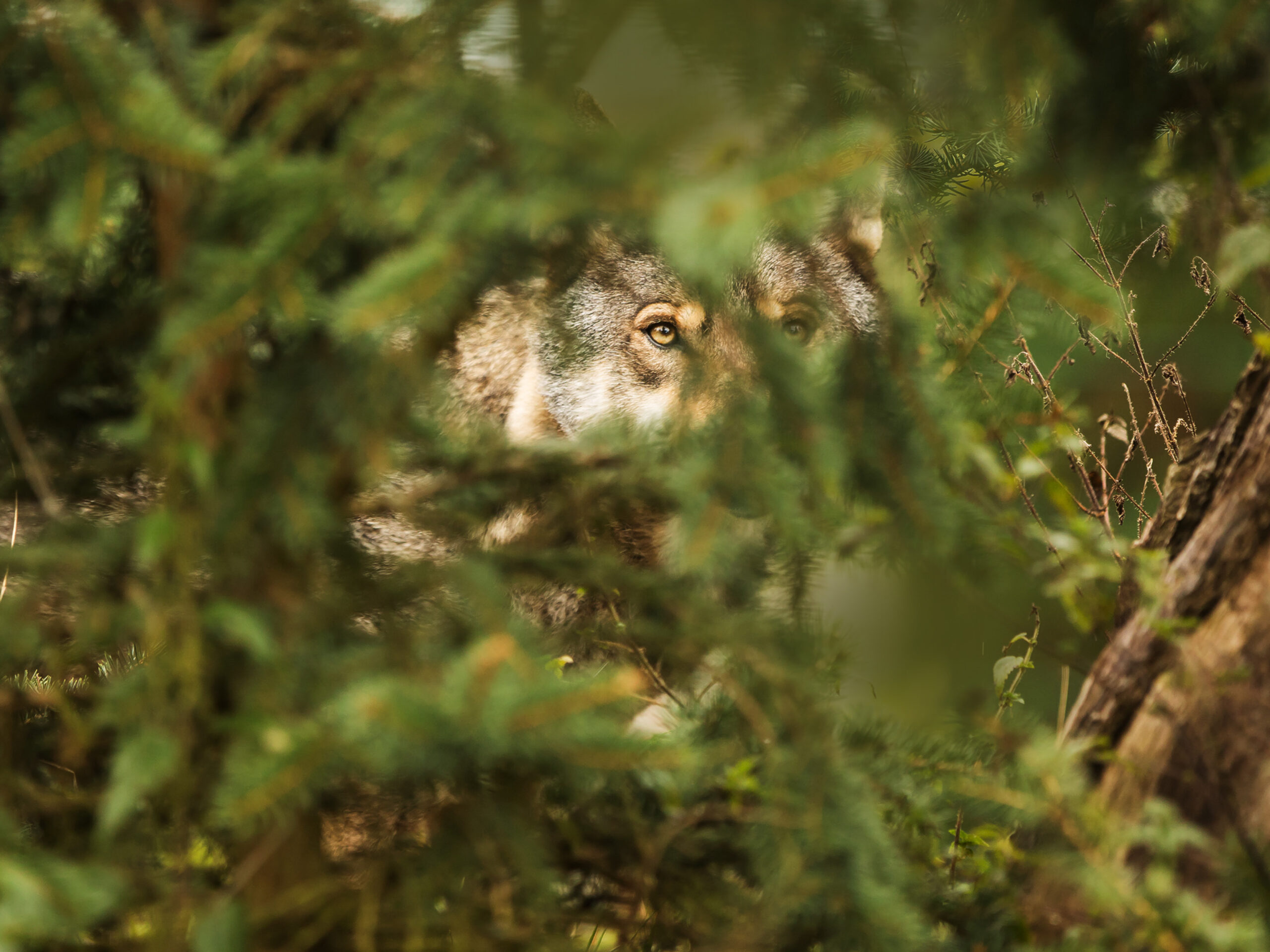Below its picturesque and much-loved falls (accessible following a quick hike from a parking area along Forest Road 23), Camp Creek flows through a grove of beautiful mature, conifer forest before joining the Cispus River.
Camp Creek is spawning habitat for coho salmon and steelhead, as well as rearing habitat for juvenile Chinook salmon. But like many waterways in the Pacific Northwest, Camp Creek was (until recently) degraded and lacked many of the habitat features that fish depend on.
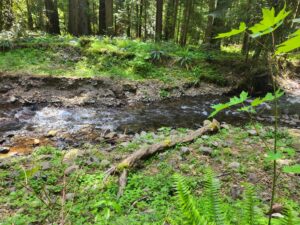
Because of factors like a lack of instream wood, Camp Creek had become heavily channelized. Rather than spreading out across the landscape into a complex series of pools and side channels, the stream was flowing quickly in one direction, stripping away much of the gravel and sediment spawning fish depend on.
But last summer, CFC oversaw a large aquatic habitat restoration project that is already having significant positive impacts. We installed more than 300 large logs to help Camp Creek re-engage its side channels and add habitat complexity. Because of the positive relationships we’ve built with the Forest Service and other organizations, we were able to complete this work for a fraction of what a project of this scale would typically cost.
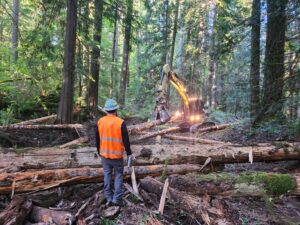
During a visit to the site in January, we saw indications that our restoration efforts were having the intended effects. Camp Creek’s side channels were flowing once again. We observed many new pools and other beneficial habitat features that are known to support spawning and maturing salmon and steelhead. We even observed evidence of recently spawning fish and feeding eagles!
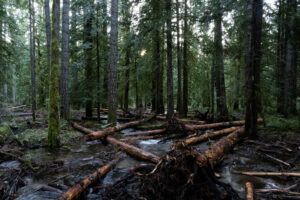
Our work at Camp Creek is complementing other nearby aquatic restoration work—such as a multi-year aquatic restoration project happening nearby at the confluence of the Cispus River and Yellowjacket Creek—making this entire segment of the watershed better for fish and wildlife.
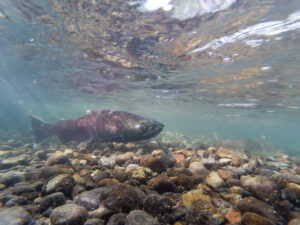
As climate change continues to alter seasonal precipitation and flow patterns and warm water temperatures in streams across the region, projects like this will be essential to conserving local species and ecosystems.


